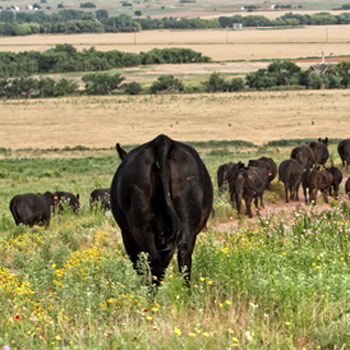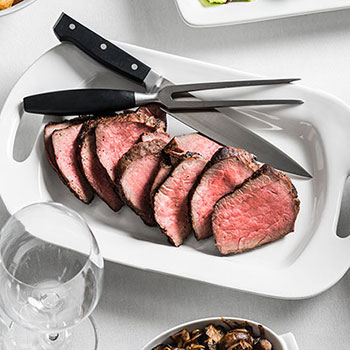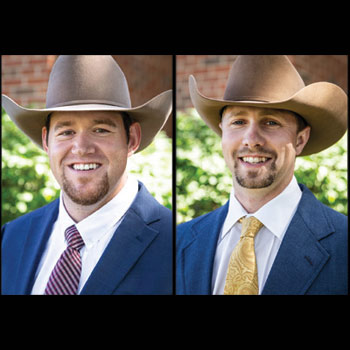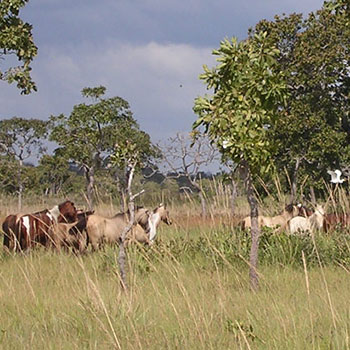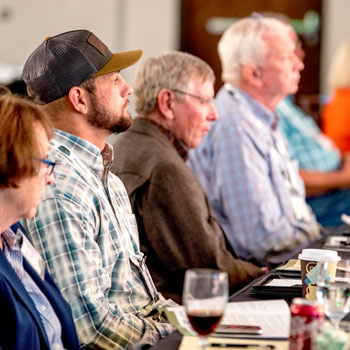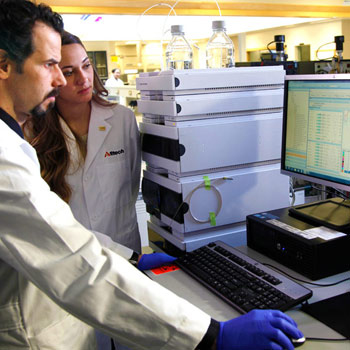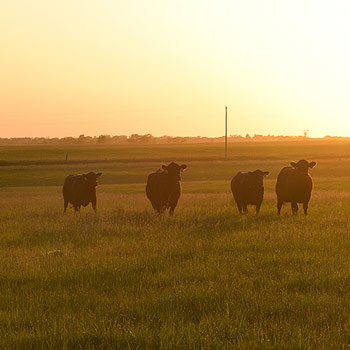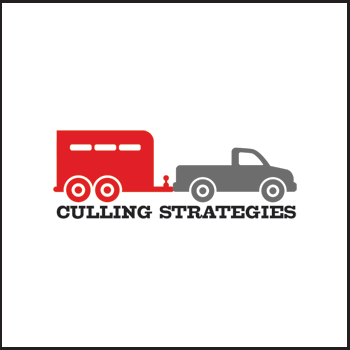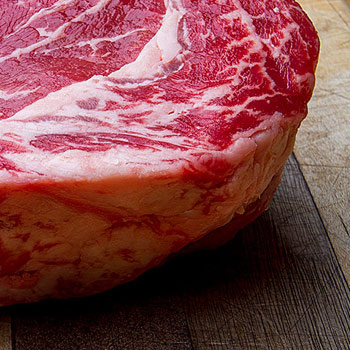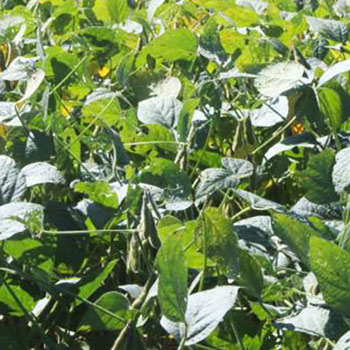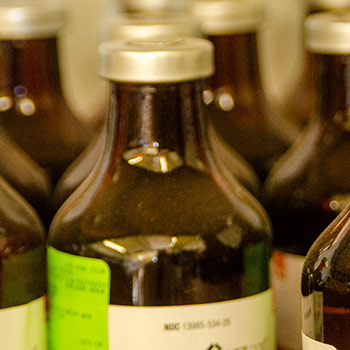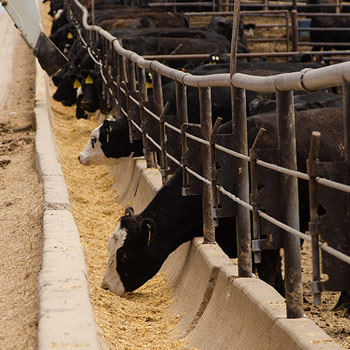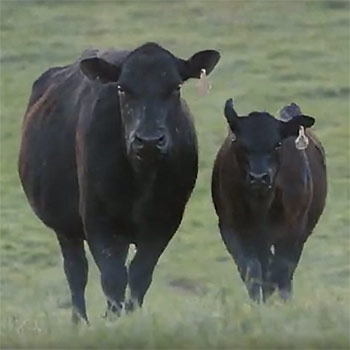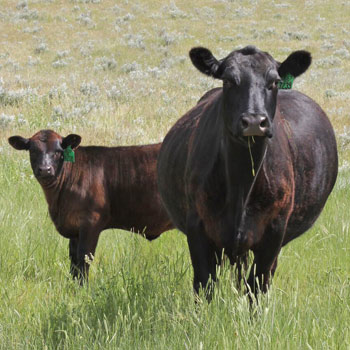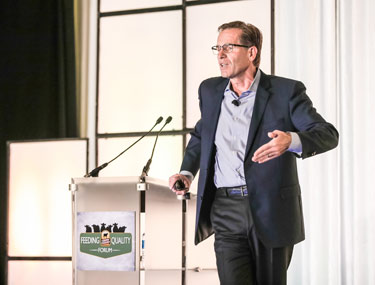Angus Advisor
Our team of Angus advisors offer regional tips for herd management for the fall season.
Southern Great Plains
david.lalman@okstate.edu$M, cow weight and feed intake Maximizing profit while producing a high-quality, wholesome product is the endgame for most cattle producers, mixed in with a good bit of lifestyle preference. The new $Maternal ($M) value index is a big step forward in assisting commercial cattle producers to identify genetics that will improve cow-calf enterprise profitability.
This dollar value index estimates cow-calf enterprise (preweaning) profitability differences using nine different traits. Mature cow weight is one of those traits that has a substantial influence on $M. The cow energy value ($EN), intended to reflect annual feed cost savings, is also heavily influenced by mature cow weight. Cow weight can be used as an indirect estimate of annual maintenance cost due to the strong relationship between cow size and feed intake.
Most beef cattle nutritionists and computer modelers estimate the amount of feed that cows consume using an equation developed and published by the National Academy of Sciences, Engineering and Medicine (NASEM); Nutrient Requirements of Beef Cattle.
To make a long story short, in 1996 the NASEM beef cattle committee developed an equation to estimate cow feed intake using results from studies conducted in the ’70s, ’80s and ’90s. The equation relies on mature cow weight and feed digestibility or energy concentration.
From this equation, one can determine that each additional 100 pounds (lb.) of cow weight is associated with about 1.5 lb. per day of additional low-quality forage intake. If the cows are consuming high-quality lush pasture or high-quality harvested forage, the added daily intake per hundred pounds (cwt.) of cow weight is estimated to be about 1.7 lb.
We reviewed more recent literature containing cow feed intake data to determine if this relationship had changed over time. To accomplish this, published and unpublished data from 12 different experiments that were conducted within the last ten years were analyzed.
From these studies we found 28 different treatment group means for gestating, non-lactating cows. Group average mature cow weight ranged from 1,100 to 1,530 lb. Similar to the NASEM equation, cow weight and diet digestibility explained a significant amount of the variation in daily feed intake.
Once the influence of diet digestibility and body condition score (BCS) were accounted for, each additional 100 lb. of cow weight was associated with 2.3 lb. of additional feed or forage intake daily or about 840 lb. annually.
The genetic trend for feed intake in growing cattle has been increasing over time in most breeds that report this trait. While we can’t say for sure that feed intake is increasing in beef cows beyond the effects of gradual increases in mature size, these data certainly suggest that it may be increasing relative to body weight.
Regardless, Angus’ $EN and $M indexes should help Angus breeders and commercial producers find “curve-bender” bulls with the capability to sire females with moderate mature cow size, acceptable growth and acceptable carcass weight.
Whether you use this more recent estimate, or those from the NASEM equation, they should provide perspective on the influence of mature cow weight on feed intake, annual carrying cost and appropriate stocking rate in your operation.
Western Region
randyp@csufresno.eduFall-calving herds Main focus: Finish the calving season and prepare for the breeding season
Sire selection: Continue developing a list of potential artificial insemination (AI) sires. Focus on bulls that will produce high-quality herd replacements. Talk to other producers about bulls that have worked well for them.
Prebreeding vaccinations: Give cows and heifers their prebreeding vaccinations at least 30 days prior to the start of the season. At a minimum, females should be receiving at least two vaccinations: 1) the respiratory complex plus leptospirosis and possibly vibriosis and 2) either a seven- or eight-way clostridial vaccination.
Deworming: Consider deworming females at the same time they are vaccinated with either an injectable, paste or pour-on product.
Mineral injection: Consider injecting females with MultiMin® at the same time that vaccinations are given. Boluses such as selenium or copper could be used also.
Retained placenta: Continue to monitor females for the incidence of retained placenta. If problems arise, treat them promptly with a prostaglandin injection (5 or 6 cc). If that treatment does not work, then inject with another prostaglandin injection and combine that with an antibiotic either infused into the uterus, given intramuscularly (IM) or subcutaneously.
Mineral supplementation: Be sure that females are receiving adequate levels of calcium, phosphorus and trace minerals deficient in your area. Mineral supplementation becomes even more important as we approach the breeding season.
BCS: Continue to monitor BCS in calving females. The target BCS is 5.0 (scale = 1 to 9) for both cows and heifers. Ideally, this level of body condition should be maintained during the breeding season.
Overconditioned: Avoid getting cows overconditioned during the breeding season, as reproductive performance starts to decline if cows are above a BCS of 6.5 to 7.0. This is most typically a problem with donor females that have not raised a calf for a period of time.
Protein and energy supplementation: Be certain that both protein and energy requirements of females are being met. If possible try to have females in a state of positive energy balance (gaining weight) going into the breeding season.
Nursing calf health: Treat calves for either scours or pneumonia promptly. It is well-advised to have first and second treatment options for both conditions.
Spring-calving herds Main focus: Getting calves weaned and keeping them healthy
Minimize weaning stress: Minimize stress on weaned calves as much as possible. Pasture weaning is a big advantage. Try to avoid dry, dusty lots for weaned calves. Shade is extremely valuable and either sprinklers or a water wagon to control dust is well worth the trouble and expense, in my opinion.
Temperature changes: Hopefully Mother Nature cooperates in terms of weather changes as weaned calves are getting adjusted and transitioned to a new environment. In our experience, the difference in temperature between the daytime high and nighttime low is extremely important. If that number exceeds 40 degrees, we experience a lot more problems with respiratory disease.
Started on feed: Get calves started on feed as smoothly as possible. Try to avoid any big changes either in terms of the amount of consumption or the type of ration being fed. Transition calves slowly from a total forage diet to a combination of roughages and concentrates.
Rate of development: Be sure that both weaned bull and heifer calves are being developed at adequate rates of gain so that differences in terms of genetic potential for growth can be exhibited. However, neither sex should be developed at extremely high rates as excessive fat deposition can hinder future reproductive performance and detrimentally impact foot and leg soundness.
Southeast Region
jduggin@uga.eduThe endgame is profit. Everyone seeks profit, but not everyone achieves it. Producers with a long-term focus have the advantage.
The definition of profit as a noun is a financial gain, especially the difference between the amount earned and the amount spent in buying, operating or producing something. Of course, there is a verb form also: to obtain a financial advantage or benefit, especially from an investment.
A cattle operation is an investment. The return from that investment may not be realized for multiple years and better observed in ten years. The amount of money spent in buying, operating and producing your product, whether that is preconditioned calves, finished beef or seedstock, will be a large factor. The five-year average for medium and large feeder steers (500 to 600 lb.) for October was $187 using the Missouri Weekly Cattle Weighted Average Report from August. Of course, 2015’s high prices factor into this. Those years can happen, just like the low-price years.
Challenges in the East Focusing on three main general factors can help over the long term: 1) cost, 2) revenue and 3) marketing. Cow input costs are part of the spending side of the equation that we do have some control over. A “correct” cow size for the operation is a great step toward getting cow cost in check. Not necessarily low cow cost, just not “elephant” cost.
The Northwest Georgia Research and Education Center cow herd is a purebred herd that is multi-generational AI focused on particular terminal traits for research purposes. In 2017, the 27 6-year-old cows averaged 1,566 lb. of mature body weight two months after weaning and ranged from 1,270 to 1,820 lb. The herd’s average calf-crop weaning weight is typically 550 lb. Calves out of the heavier cows would have a greater cost for nutritional maintenance requirements. For every 200 lb. in cow weight, there is roughly an additional 3 lb. of dry matter needed per day.
For example, a 1,400-lb. cow requires 27 lb. of dry matter per day and the 1,600-lb. cows require 30 lb. per day. What does three lb. of dry matter per day cost through a 90-day winter? On average, these cows will wean similar weighted calves. This is a reminder that the most profitable cows don’t necessarily wean the heaviest calves.
After finding ways to reduce costs, maximizing product within those costs is essential. The next step requires a focus on reproductive efficiency. Culling open females while simultaneously breeding fertility in the herd is a must for improved revenue in the form of pounds weaned per cow exposed.
When factoring in number of cows exposed, a 500-lb. weaning average is really 450 lb. or 400 lb. for 90% and 80% calf crops. Although challenging, operations should target 90%-plus calf crops.
Step 3 for producers is selling a premium product with all the bells and whistles. Uniform calves marketed under a solid health and management protocol should improve profit.
Midwest Region
baileyeric@missouri.eduWith all the uncertainties we have faced in the last 18 months, many are concerned about beef prices in the short term. That has led to questions about the “low-hanging fruit.”
To me, cow-calf profitability always goes back to the balance of forage demand and forage availability. More than 50% of annual cow costs are feed-related. Many times, these costs are largely composed of purchased and raised (hay) feeds. If you’re feeding hay for more than 100 days every winter, your cow herd likely has a greater forage demand than forage available. The least palatable option is to reduce stocking rate.
More realistically, your cows have gotten bigger over time and require more feed. Final body weight of cattle in the feedlot has increased by more than 200 lb. in the last 20 years, yet only 30% of the variation in final body weight can be explained by increased days on feed. We are making bigger cattle than we used to. Yet, an interesting experiment out of Oklahoma State University (OSU) a few years ago showed that natural cattle (no hormones, implants or beta agonists) were 130 lb. lighter at harvest than those fed using the aforementioned technologies. We can make bigger feedlot cattle without keeping big cows around.

My advice is simple. The most productive cows will wean close to half of their body weight in calves each year. Try to find any cow that is weaning less than 40% of her body weight and cull immediately.
When you’re selecting genetics, try to select for maternal traits and moderate-sized cattle. Your bottom line will be happier with a herd of cows weaning half their body weight each year, rather than a third of their body weight; even if the difference is not readily apparent. Cows have gotten too big and often, cow size translates into increased cow costs rather than increased weaning weights.
